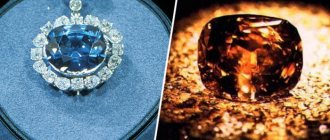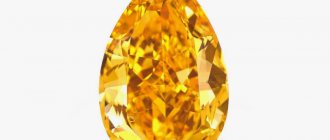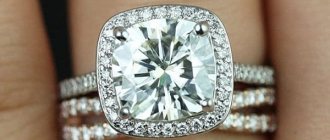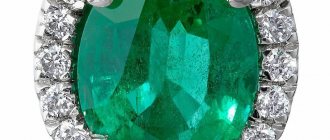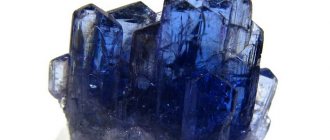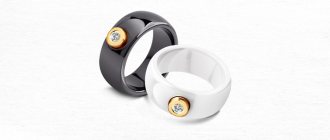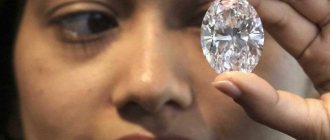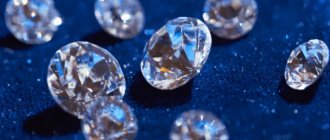Crimes in the biographies of famous diamonds are as commonplace as snow in winter.
The sparkling miracle of nature called a diamond has no rivals. The magnificence of precious crystals drives you crazy and makes you commit rash actions, which is why diamonds have been called “kings of precious gems” since ancient times.
But even among the best there are the very best, who are recognized as the “stars” of the jewelry world. The bloody mysteries and secrets of everyone are not at all fictitious: everything was in reality.
Diamond Cullinan
The gem was named after the owner of the mine where it was found at the beginning of the 20th century. The digging site was located in South Africa. The size of the gem turned out to be truly stunning. Its length was 11 cm, width 5, and height about 6 cm. As for the number of carats, the figure was 3,106 (about 620 g). But not only the dimensions of the diamond amazed the owner: its clarity also turned out to be ideal. After 2 years, the precious crystal was presented to King Edward the Seventh of England for his birthday. The Tranvaal Republic, which made such a generous gift, had several selfish motives, intending to gain some political privileges. By today's standards, the cost of the stone can be equated to 94 tons of gold.
When the diamond was delivered to London, Interpol was in charge of its security. A real performance was staged, in which the diamond played the main role. A special ship of the British Empire was pompously carrying an exquisite box with a seal on it. And inside was... a piece of glass. At the same time, the real Cullinan was delivered to the capital by the postal service, without an orchestra or ovation. The package bore a regular postage stamp, and inside the package was a priceless treasure.
The specialists who were invited to cut the crystal noticed several cracks in it, so they made a clear verdict. They said that it would not be possible to obtain a huge diamond from a diamond, and it would be best to divide the crystal into several parts. Dutch jewelers Usher, who worked and lived in Amsterdam, were appointed to manage the cutting process. Joseph Asher spent about 6 months just carefully studying the diamond, and only after that began the jewelry manipulation of dividing the Cullinan into parts. Tradition says that the jeweler lost consciousness from excitement when he first touched the stone with a cutting tool in the winter of 1908.
The work dragged on for several years, after which 9 large diamonds and almost 100 smaller ones were seen. After cutting, a little more than 60% of the original mass of the crystal remained, but all that came out were amazing in their purity. The jeweler did his job perfectly, maintaining the parameters of the “progenitor”.
The largest are the two parts of Cullinan. The first diamond is called “Cullinan I” and weighs 530 carats. The second is called "Cullinan II" and weighs 317 carats. The first Cullinan is also called the “Great African Star” because of its teardrop shape. The number of facets in a unique diamond is 74. The next eight precious pieces of the Cullinan began to be called “Small African Stars”. The two largest gems belong to Britain, and you can see them in the Tower. Cullinan the First is inlaid into the scepter of King Edward the Seventh, and Cullinan the Second appears on the royal crown. It is easily recognized by its rectangular shape.
Diamond Excelsior
This stone was considered the largest until the moment when Cullinan appeared. Excelsior is also a native “African”: it was found in 1893 in a mine called Jagersfontein. The diamond weighed 995 carats, but they did not stand on ceremony with it and quickly sawed it into several dozen pieces. To be very precise, 21. But none of these diamonds became as famous as the Cullinan “family.”
Most of the buyers wished to remain anonymous; it is only known that three copies were purchased by the famous. The De Beers corporation demonstrated one diamond at an exhibition in 1939. In 1984, she announced the sale of five diamonds. According to Mr. Graff, the Excelsior I diamond was previously owned by an American family. 7 years later, Excelsior I was put up for sale again and in 1996 was purchased by jewelry magnate R. Muawad for almost $2.5 million. 8 years later, the famous model Heidi Klum showed it off as a bra decoration for $11 million.
Stone care
Diamond is not picky in care. It cannot be scratched, since it has the highest hardness, but it can be split into small pieces with strong squeezing and impact.
To store the mineral, a separate fabric bag or box is sufficient. This measure is more necessary to preserve the setting than the diamond itself.
Wash the diamond with soapy water and dry with a soft cloth. Periodically, the crystal must be washed in a weak solution of ammonia so that plaque does not form on its surface.
Every year, it is recommended to have the stone professionally cleaned with ultrasound to remove as much dust and dirt as possible.
Diamond Centenary - Centenary
This gemstone holds a “bronze” place in the ranking of the most luxurious and expensive diamonds. The weight of the stone was 274 carats, the brilliance of which is reflected in 274 facets. This gem is the youngest: it was found only in 1986. And surprisingly, in the same mine where Cullinan was once found. The diamond was presented in 1988 at one of the social events dedicated to the anniversary of the de Bris corporation. And since the anniversary was a centenary, the stone got its name, which translates as “century”. The diamond had a very complex shape, so jewelers spent 3 years studying the structure of the crystal to decide how best to process it in order to preserve its original beauty as much as possible. The research was carried out in a special bunker, entry to which was strictly limited. To ensure that the cutting is carried out to the highest possible quality, scientists have created unique equipment. And by 1991, the final processing of Centerini was completed. In May 1991, Centenary was exhibited at the Tower of London, after which the American Gemological Institute awarded the stone the highest ratings for clarity and color. The future fate of the third largest diamond in the world remains unclear. It is not known exactly where the diamond is located now. One can only guess who she sold it to. According to rumors, the stone, insured for $100 million, was purchased by the British royal family. Whether this is true or not is not known for certain.
DIAMONDS ARE PRECIOUS AND NOT VERY PRECIOUS
There are the following types of diamonds:
| Jewelry | Can be processed and cut, there are no defects |
| Technical | The structure is damaged, is not used for making jewelry, they have multiple inclusions. |
It is not for nothing that diamond is considered the most expensive mineral - most of the stones are used for technical needs. Only 20% comes from jewelry. This is due to the difficulty of extracting high quality stones without inclusions.
Among a million stones, there is hardly one nugget worth the attention of jewelers. After processing, the nugget becomes half its original size: this is due to a specific cut that turns 50% of the nugget into dust.
Cut shapes
Black Diamond Orlov
Also known as the "diamond eye of Brahma". In India, a 195-carat black diamond, according to legend, adorned the eye of a statue of the god Brahma near Pondicherry (South India). Perhaps such a biography, as well as the rare black color, would explain all the rumors about the curse, if some of its owners did not commit suicide. The first was Jay Paris, who brought the diamond to America in 1923. Some time later, he jumped from one of the New York skyscrapers. The next owners, Nadezhda Orlova and Princess Galitsina-Baritanskaya, also allegedly committed suicide in 1947. It is difficult to say how true these stories are - the archives avoid mysterious deaths.
According to documents, Princess Galitsina-Baritanskaya died at the age of 102 in Switzerland in 1918, and Nadezhda Petrovna Orlova at the age of 90 in France in 1988. Subsequently, the stone changed many more owners, the most famous of them is the jeweler Denis Petimezas, who bought the stone in 2004. He publicly stated that he did not feel any effect of the notorious curse, and the diamond brought him nothing other than good luck. However, after 30 months he put it up for sale. In 2006, “black Orlov” found a mysterious buyer, according to the media, “from another continent,” whose name and fate are unknown to the public.
Medicinal properties
As noted earlier, diamond is a stone with incredible energy potential. It charges the body with positive vibrations. They treat skin diseases, eliminate inflammatory processes in the body, tidy up the liver, stomach, bronchi and lungs, as well as the bladder.
The gem has the most positive effect on a person’s mental state, helps to cope with insomnia, irritability and even schizophrenia, and regulates the cardiovascular system.
Green diamond is considered a stone of motherhood - it helps with gynecological problems. The stone is recommended for women to wear during pregnancy and childbirth.
The benefits of drinking so-called “diamond water” are well known - a mineral immersed in water for a day allows you to charge it and make it indispensable for recovery processes after illness or surgery.
Diamond Golden Jubilee
The largest diamond (cut diamond) in the modern world is the Golden Jubilee. The found diamond weighs 755 carats and ranks 8th in size among all gem-quality diamonds ever discovered. The diamond did not have any name, so it was simply called the Nameless Brown Diamond. Under this name, the stone was shown at several exhibitions, including the Thai Board of Investment exhibition, where it was brought by the Thai Diamond Manufacturers Association. The exhibition was a great success; large queues lined up to see the unusual diamond.
The diamond got its name in honor of King Bhumibol Adulyadej (Rama IX) of Thailand. The stone was presented to the king by his subjects in 1997 in honor of the 50th anniversary of his coronation. In addition to being the largest diamond, the Golden Jubilee is also the largest brown diamond in the world.
Thailand is one of the few countries in the world where the political system is a constitutional monarchy, and the ruling king enjoys great authority. In 1997, Thailand was preparing to celebrate the 50th anniversary of the reign of its beloved king and a group of businessmen, led by the famous diamond seller Henry Ho, decided to present a diamond as a gift to the monarch. In 1995, the diamond was purchased from De Beers and exhibited at the Henry Ho jewelry shopping center in Bangkok. Before the presentation, the diamond was shown to Pope John Paul II, the Supreme Buddhist Patriarch and Supreme Muslim Imam of Thailand, and received their blessing.
It should be noted that Thailand was experiencing an economic crisis at that time, and in order not to worry fellow citizens, the government announced that the gift received was not a diamond, but a large golden topaz. There were plans to set the stone into a royal scepter or royal seal, but for now it remains unmounted. The world's largest Golden Jubilee Diamond is currently on display in the Throne Room of the Golden Temple at the Royal Museum in Bangkok.
European classification by purity groups
One of the price-determining indicators for natural diamonds is the presence of cracks, chips, hard and gas inclusions, and impurities that impart pigmentation. External and internal defects affect the quality of the crystal because they prevent the stone from fully reflecting color.
It is customary in the world to classify diamonds according to purity groups, designated by Latin letters:
- FL (Flawless) – crystal clear without inclusions.
- IF (Internally Flawless) - samples without inclusions, but with external defects - cracks, scratches.
- VVS (Very Very Small Inclusions) are minerals with tiny inclusions that cannot be seen without the use of powerful magnifying devices.
- VS1, VS2 (Very Small Inclusions) - crystals in which there are inclusions of such a size that they can be seen with a 10* jewelry loupe.
- SI (Small Inclusions) - gems containing foreign impurities that are clearly visible through a 10x magnification magnifying glass.
- I (imperfect) – diamonds containing inclusions visible to the naked eye.
This is a European classification that allows even a non-specialist in jewelry to get an accurate idea of the quality of a diamond.
Hope Diamond
The most “unlucky” is a sapphire-blue diamond, with a name that is absolutely inappropriate to its reputation - Hope. The stone, which weighed one hundred and fifteen carats before cutting (a carat is equal to 0.2 grams), was brought from India by the French merchant, traveler and jeweler Jean-Baptiste Tavernier, who, by the way, is known for his descriptions of the Golconda mines. He presented it to King Louis XIV.
The first person to be cursed was the king's long-term mistress, the Marquis de Montespan. This ardent black-haired beauty, who was also smart and educated, who managed to give birth to the king eight children, having received a diamond as a gift, immediately became disgusted with the Sun King. The lady of the heart was expelled from the palace, and the diamond found its place on the lace frill of Louis XIV. Exactly seven months later, in 1715, the king, who had not parted with the diamond, died. His heir, Louis XV, hid "Hope" for many years in the royal treasury. Its next owner was the notorious Marie Antoinette, who loved chic dresses and beautiful stones. Her fate, like the fate of her husband, is well known to everyone - the guillotine. Its next known owner was George IV, who soon went mad. After this, the stone was sold to banker Thomas Henry Hope. The man after whom the stone was named was poisoned.
In 1910, the diamond was purchased for 550 thousand francs by jeweler Pierre Cartier, who for some reason immediately resold it to the MacLean family of millionaires. Edward Bale McLean was the hereditary owner of the Washington Post newspaper, and his wife Evelyn Welsh McLean owned diamond mines. Soon the family lost an heir, after which Mr. McLean drank bitterly and died. The frightened family sold Hope in 1958 to renowned philanthropist Harry Winston, who subsequently donated it to the Smithsonian Institution.
Today the famous “Nadezhda” awaits its new victim behind the bulletproof glass of the exhibition.
COLOR PALETTE
The color of a diamond comes in all colors of the rainbow. It is affected by impurities in the diamond, as well as chemical reactions during the formation process. There are unusual colors of diamonds in nature. Among them: yellow, blue, red, green, transparent and others.
Diamond color palette
The stone without color is especially beautiful - transparent. We recommend: EMERALD AND BERYL: are they the same thing?
The unusual yellow color is obtained by replacing carbon atoms with nitrogen particles. Dark yellow stones of this color range are the most valuable.
Expensive, exquisite diamonds have red, brown, and pink tints. They are mined in Australia. Scientists do not know how the stones take on an unusual color, which gives the nuggets mysticism and mystery.
Blue stones are obtained by replacing the atoms of the crystal lattice from carbon to boron. The color blue is often created in laboratories.
The color green is produced when it is influenced by radiation waves. Black nuggets are mined from the upper layers of the earth's crust, and its structure is characterized by tiny crystals fused together.
Diamond Sancy
Nothing is known about the origin of another infamous Sancy diamond. They say that a certain merchant got it in the caves with jewelry and took it as a gift to the Sultan, but he was killed on the way. After this, the stone went “for a walk” around the world until it fell into the hands of King Charles the Bold in the 15th century. He gave it to a jeweler for cutting, who made it into a pale yellow diamond of 55.23 carats.
Two years later, the king died, and the stone went missing and was found only in 1570 by Nicholas de Sancy, a French attorney in Constantinople. This is who the diamond treated favorably - with its help, Nicholas managed to win the favor of the King of France, Henry III, to whom he lent it for a while. According to legend, a servant who went to deliver the stone to the king died at the hands of robbers, but not before he managed to swallow “Sancy”. As you know, Henry III also did not sit on the throne for long.
When the French Revolution occurred in 1789, the Sancy was in the French treasury along with the other fatal diamonds, the Hope and Regent. His further fate is unclear. It is known that he managed to be in the hands of the Demidovs. In the end, it was bought by the American industrialists Astors, who after some time sold it to the Louvre, where it remains to this day.
SIZE MATTERS
The morphological characteristics of diamond are varied. Scientists distinguish poly- and monocrystalline forms of nuggets, which affect the strength of the mineral.
The mineral is so rare that large deposits can be counted on the fingers of one hand. Rich mines have 3 to 6 stones per 1 ㎥.
The weight of a diamond affects its value. Having found an apricot-sized diamond, the owner will purchase the plant with the funds received from it.
Diamonds with amazing clarity and brilliance are highly prized.
Diamond size and weight
Diamond crystals vary from microscopic (discernible only with a telescope) to large ones, the size of a fist. Researchers discovered a nugget weighing 0.63 kg (more than 3,120 carats) in the bowels of South Africa.
Diamonds weighing more than 15 carats are considered rare stones, while diamonds weighing more than 101 carats are considered rare. Often these specimens are given names.

